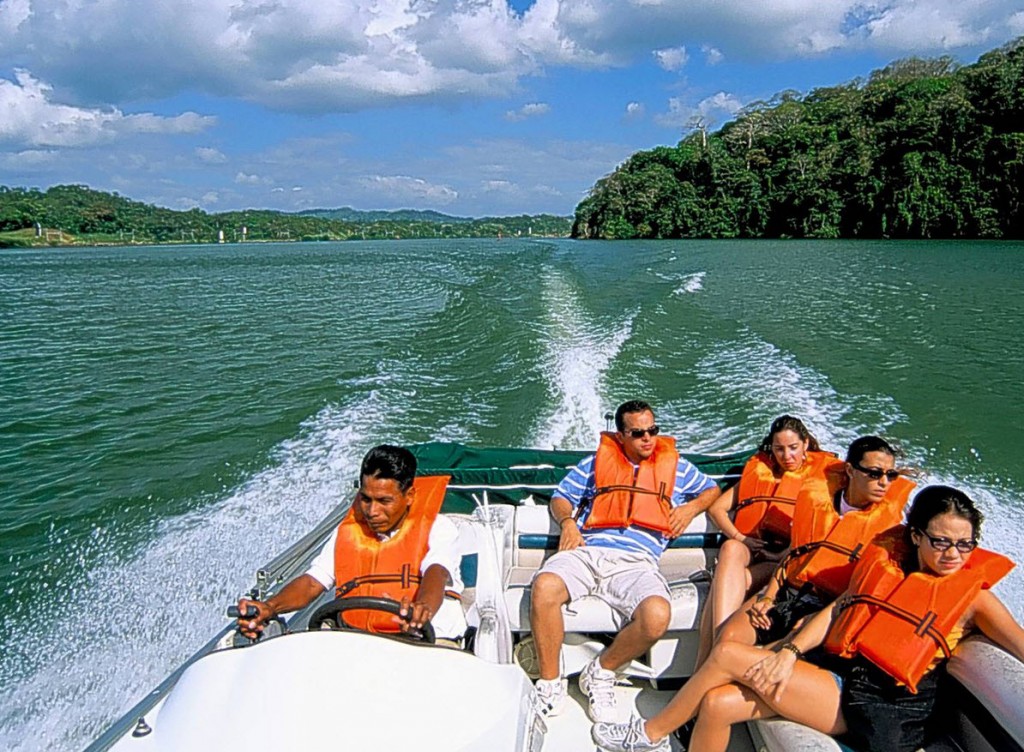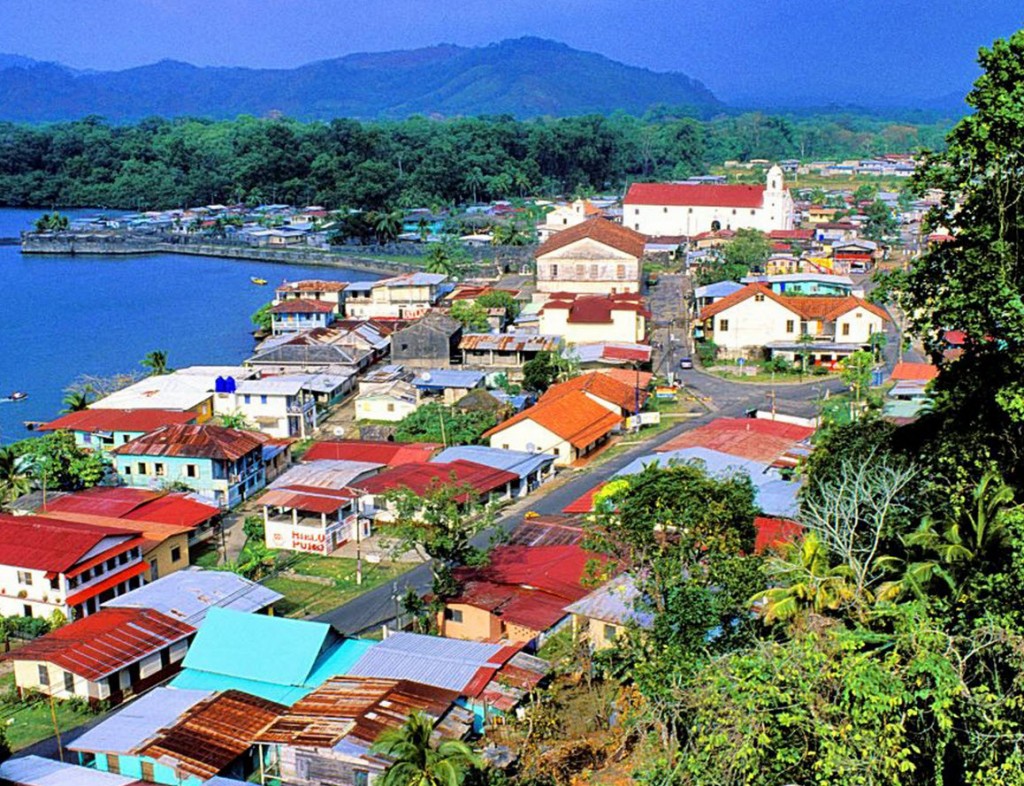Here is a great story by Mick Webb, a travel journalist who recently visited Panama and toured many of it’s natural wonders.
Five hundred years ago, the Spanish conquistador Vasco Núñez de Balboa discovered the Pacific Ocean on a cross-country journey from the Atlantic. Mick Webb follows in his oar strokes
A stroll through the rainforest is no walk in the park, even when a decent track makes a machete surplus to requirements. It’s not just the energy-sapping humidity that makes every step an effort, or the clouds of insects. Your senses are also constantly assailed by strange sounds, vivid colours and, if you are with a guide like Victor, a stream of information.
“See that leaf?” he asked. “Touch it. No, not that one, it’s poisonous! This one.” I tentatively touched the delicate fern-like leaf, which immediately folded itself up as though trying to escape. “It’s called the shameful plant because it hates being touched – it’s a defence mechanism.”
A loud roar interrupted his spiel. “What do you think that is?”
“A puma?” I suggested, peering into the dense undergrowth.
“No, it’s a howler monkey!” At least a kilometre away, Victor reckoned, although it sounded as if it were right beside us. It’s the world’s loudest land animal.
We were on the Pipeline Road, a 17km path through Panama’s Parque de Soberanía. Built to service an oil pipeline during the Second World War, it’s now one of a series of walking trails through the corridor of green spaces that cross the isthmus and is home to some of the country’s exuberant wildlife. This particular path is a renowned bird-spotters’ beat, where the Panamanian Audubon Society once recorded more than 500 species over a 24-hour period. Victor and I only managed three, although one was an iridescent beauty, the blue-crowned motmot. An approaching tropical rainstorm had encouraged most birds to stay, sensibly, in the shelter of the enormous trees. The wildlife may not have been teeming but the rain soon was, sending us sprinting for the van and the half-hour drive back to Gamboa, the nearest town.
Beside the Panama Canal, halfway between Panama City on the Pacific and Colón on the Atlantic, Gamboa is made up of neat rows of wooden houses, untypical of the rest of Panama, which were built for American personnel working on the canal during its many years under US control. From the Gamboa Resort Hotel you can take an excursion by boat to Gatún Lake, which forms the central section of the world’s most important aqueous shortcut – which celebrates its centenary next year – and is a wildlife reserve in its own right. I saw crocodiles, snail kites and visited an island inhabited by a white-faced capuchin monkey, who’d been christened “Seventy Eight” after the number on the nearest canal marker buoy.
The search for routes across the Panamanian isthmus – Central America’s narrowest nation and the dividing line between the Pacific and Atlantic oceans – has a long history that stretches well beyond the Panama Canal. In the 16th century, the Spaniards needed a way of transporting the gold and silver looted from the Pacific territories of South America over to the Caribbean coast, where they could load it onto ships bound for Spain. The Camino Real (the Royal Road) was the first of these routes; it was a demanding trek, particularly in the rainy season with heavily laden mules. You can walk on vestiges of it today as part of an adventurous eight-day hike from Panama City to Portobelo, whose impressive fortifications hint at a dramatic imperial past. The Camino Real was eventually replaced by an easier route, the Camino de Cruces, a 10km stretch of which passes through the Parque de Soberanía.
The man who paved the way for the later crossings was the Spanish conquistador, Vasco Núñez de Balboa. In 1513, he set out to explore the daunting landscapes of jungle and swamps that are now part of the Darién, Panama’s wildest province, bordering Colombia. Guided by locals, on 25 or 27 September (the actual date is disputed), Balboa became the first European to set eyes on the Pacific Ocean, which he named the South Sea after the direction they’d travelled in, and duly claimed for the Spanish crown. The event was recalled in a famous poem by John Keats: “On first looking into Chapman’s Homer”. Unfortunately Keats credited the wrong conquistador with the momentous discovery: “Like stout Cortez when with eagle eyes he star’d at the Pacific…”
Balboa’s route across the isthmus has never been accurately charted and even today the Darién is only visited by the most adventurous travellers. It’s an 80km by 50km stretch of jungle without roads, which the activities of paramilitary groups and drug smugglers have made into a virtual no-go area. However, the Caribbean coast where Balboa began his journey is more accessible to visitors. It’s the territory of the Guna Yala people, who occupy a narrow strip of the mainland along the shore, as well as an astonishing array of more than 350 palm-covered San Blas islands.
You can visit the archipelago by plane, but I’d travelled overland from Panama City, a cross-country drive of two-and-a-half hours to the closest coastal settlement, Carti, and then a short boat trip to Isla Aguja, Needle Island. As their income from coconuts and lobster-fishing has declined, the Guna Yala are turning to tourism. They sell colourful patterned textiles called molas, sewn onto blouses.
Rustic would be a fair description of the six cabins that comprised the accommodation there, but once the door had been put back on my hut and I’d evicted a couple of hermit crabs, it looked comfortable enough. After snorkelling among the coral off one of the many uninhabited islands, it was time for a lunch of red snapper, caught that morning, and coconut rice, on tiny Devil Island. The afternoon brought more snorkelling and a visit to one of the larger, densely inhabited islands, then I made my way back to Isla Aguj to watch the sun sinking slowly behind the palm trees into the waveless Caribbean – and to raise a glass to Vasco Núñez de Balboa.
His own return to this shore after the historic expedition did not bring happiness and acclaim. Political jealousies and rivalries led to accusations of treachery against him and a few years later he was executed. Hardly the reward his great discovery should have merited.


